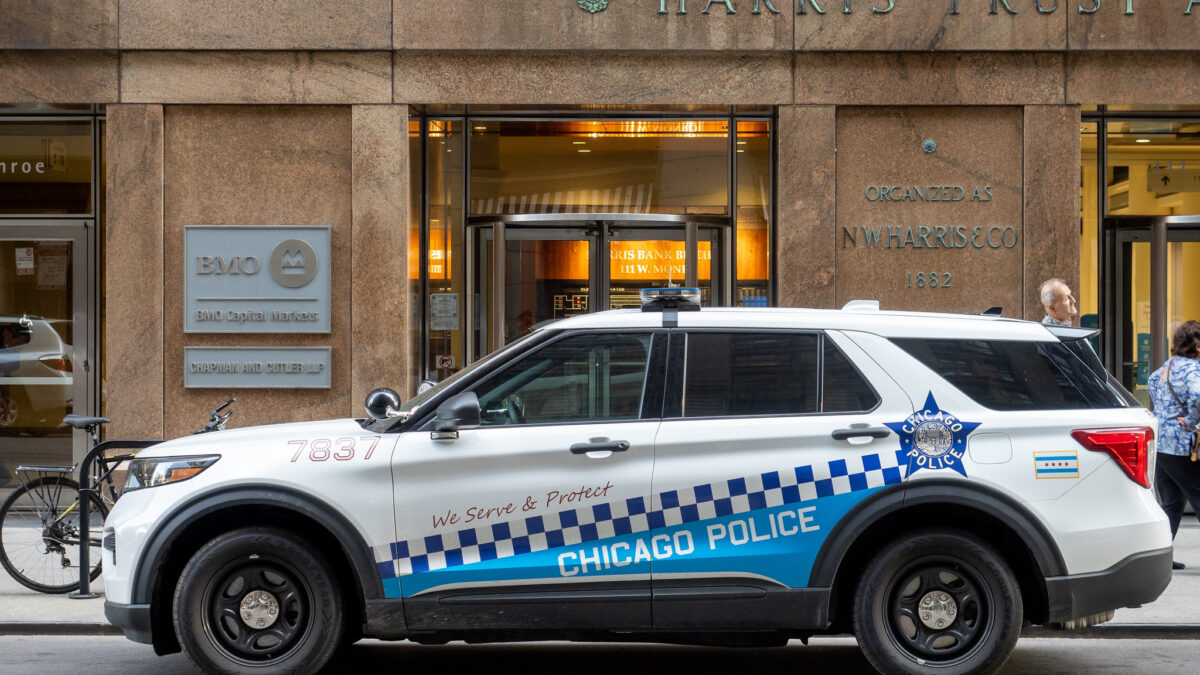
On Tuesday, the U.S. Court of Appeals for the Second Circuit reinstated Sarah Palin’s defamation lawsuit against The New York Times, in a major victory for the former vice-presidential candidate.
The unanimous decision greatly increases the odds a jury will hear Palin’s claim that the Times acted with actual malice by publishing an editorial linking her to the attempted assassination of a congresswoman. The case also provides a timely reminder about the harm caused by speculating about motives for murder, even when the attempted victim is a politician.
In January 2011, Jared Lee Loughner attempted to assassinate Democratic Rep. Gabrielle Giffords. He killed a federal judge, a nine-year-old girl, and four others, injuring many more. The bodies of the dead were not yet cold when various media figures, including Times columnist Paul Krugman, Andew Sullivan, and Matt Yglesias, sought to implicate Sarah Palin for these crimes simply because Giffords was among the politicians targeted for defeat by Palin’s political action committee in a map that used cross-hairs to identify their districts.
No evidence ever emerged connecting Palin or the map to Loughner, an anti-theist who had a long-standing grudge against Giffords. Loughner had been diagnosed with paranoid schizophrenia, and was a 9/11 truther who promoted bizarre conspiracy theories about people being brainwashed by grammar. Indeed, the Times ultimately reported that there was “[n]o connection” between the SarahPAC map and Loughner.
In June 2017, James Hodgkinson opened fire on a practice for a congressional baseball game, seriously injuring four people, including Republican Rep. Steve Scalise. The Times quickly published an editorial about political violence that linked Palin to the Giffords shooting. The editorial claimed the “link to political incitement was clear” in the Giffords case, referring to the SarahPAC “cross-hairs” map.
As for the Hodgkinson case, the Times opined: “Though there’s no sign of incitement as direct as in the Giffords attack, liberals should of course hold themselves to the same standard of decency that they ask of the right.” A political firestorm ensued; the Times quickly issued a correction.
Later that month, Palin sued the Times for defamation. Approximately one month later, federal district court judge Jed S. Rakoff (a Clinton appointee) dismissed Palin’s lawsuit. He ruled her complaint, even when supplemented by facts elicited at an evidentiary hearing, failed to show the “actual malice” (knowing or reckless disregard of falsity) a public figure is constitutionally required to demonstrate.
The evidentiary hearing proved to be the undoing of Judge Rakoff and the Times on appeal. As the Second Circuit observes in its opinion, the appeal has more to do with federal civil procedure than the First Amendment.
Under Federal Rule of Civil Procedure 8, a complaint must contain “enough facts to state a claim to relief that is plausible on its face.” Palin’s complaint was dismissed under Rule 12(b)(6), for failure to state a claim upon which relief can be granted. Rule 12(b)(6) motions are to be decided solely by reading the complaint. When a judge considers a Rule 12(b)(6) motion, all well-pleaded allegations of material fact are accepted as true and construed in the light most favorable to the non-moving party.”
In addition, Rule12(d) provides: “If, on a motion under Rule12(b)(6)… matters outside the pleadings are presented to and not excluded by the court, the motion must be treated as one for summary judgment under Rule 56. All parties must be given a reasonable opportunity to present all the material that is pertinent to the motion.”
Motions for summary judgment are generally not filed until after the parties have engaged in pretrial discovery, taken depositions, and so forth. The idea behind summary judgment is that the evidence amassed by the parties shows no genuine issue of material fact exists, thereby allowing the judge to decide the case as a matter of law without conducting a trial.
In this case, the Second Circuit concluded that in taking and relying upon testimony from James Bennet—the editorial page editor at the Times and the ultimate author of the 2017 editorial—Judge Rakoff essentially violated Rule 12(d). The judge did not purport to convert the motion into one for summary judgment and Palin had no prior notice the judge planned to do so on his own initiative. To the contrary, the appellate court noted “the district court was explicit about treating the motion only as a test of the sufficiency of the pleadings.”
More important, the Second Circuit further concluded: “Even if the plaintiff had been given notice and the court had explicitly converted the motion to one for summary judgment, we would still have to vacate because the district court’s opinion relied on credibility determinations not permissible at any stage before trial… [T]he district court’s acceptance of Bennet’s testimony as credible was what led it to grant the Times’ motion to dismiss.”
As the appellate court recounted, Bennet was the hearing’s only witness. He claimed “he was unaware of any of the earlier articles published by the Times, or by The Atlantic (where he had previously been the editor in chief), that indicated that no connection between Palin or her political action committee and Loughner had ever been established.” The Second Circuit ruled Palin’s complaint sufficiently alleged “that Bennet’s opportunity to know the journalistic consensus that the connection was lacking gives rise to the inference that he actually did know.”
The appellate court also considered Palin’s allegations regarding the fact that Bennet’s brother is Democratic U.S. Sen. Michael Bennet, who had been the subject of a gun threat two days prior to the Giffords shooting. Palin had endorsed Bennet’s opponent in 2016, while Giffords backed the senator. The court concluded that political opposition alone does not show actual malice, but Palin’s allegations could show a personal connection to gun violence, which would present a plausible inference that Bennet’s professed ignorance was false.
The Second Circuit further opined that the inclusion of a hyperlink in the editorial to a Times news story stating there was no connection between the SarahPAC map and Loughner gave rise to a plausible inference of actual malice. The court also rejected the argument that the paper’s swift correction demonstrated the editorial was merely the result of a mistake.
The decision concludes by noting the Second Circuit took no position on the merits of the case. However, by condemning the district judge for making “credibility determinations not permissible at any stage before trial,” the appellate court is heavily implying that Palin’s case cannot be decided by summary judgment and would require a trial on the merits.
Palin’s win is a victory not only against the Times, but also for America’s political discourse. In the wake of mass shootings, the media—and the public on social media—increasingly rush to judgment about the killers’ possible political motives. The speculation is nearly always motivated by the desire to politically profit from these gruesome tragedies. The Second Circuit has provided an unfortunately timely reminder that this sort of toxic political recklessness may have legal consequences.









